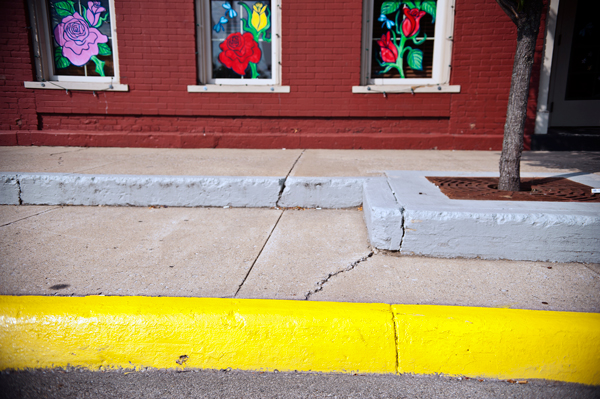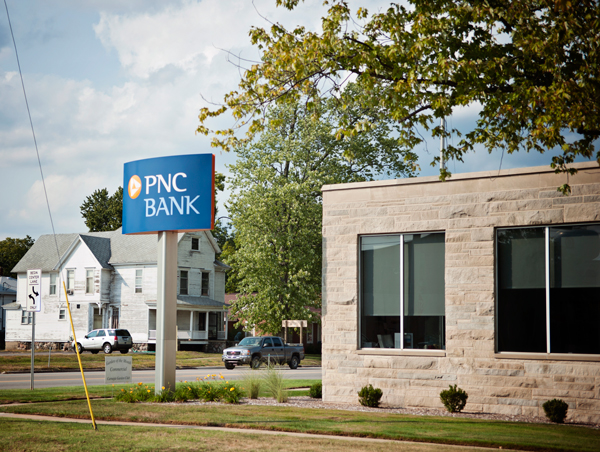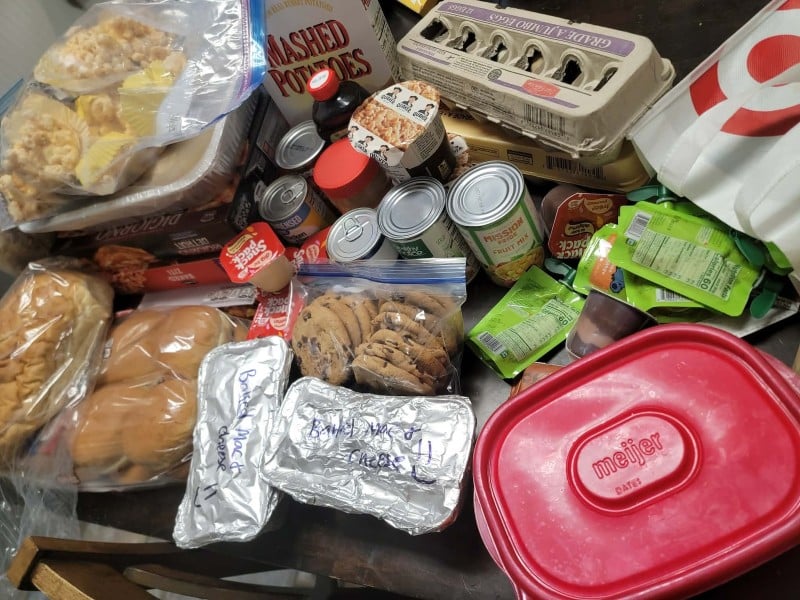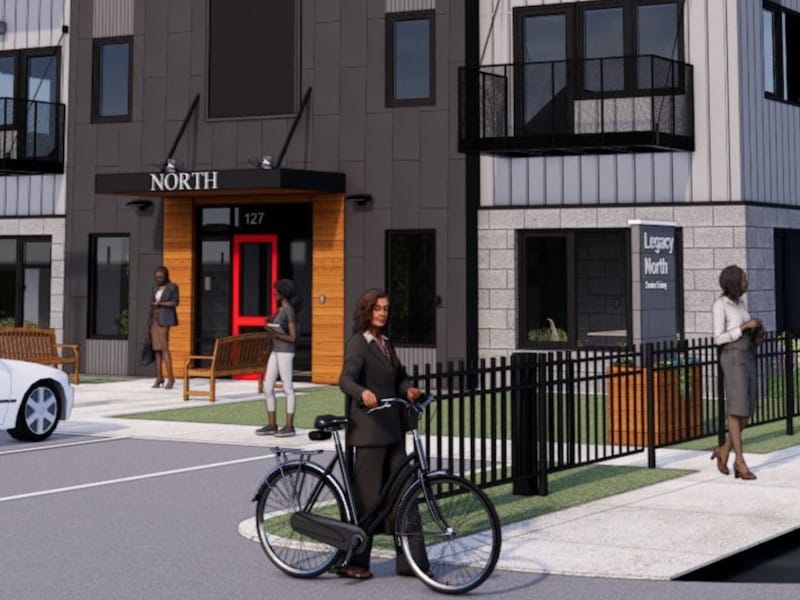Thinking outside the box on a walk through Paw Paw
On a sunny, Sunday afternoon a group of people who care about Paw Paw turned out to hear how they could improve their community by returning their streets to a human scale. Innovator Dan Burden led the discussion.
When you know what to look for you can see your community through new eyes.
With a combination of computer wizardry, information drawn from experience working with more than 3,500 communities across North America, and an ability to clearly identify what’s working and what’s not, Dan Burden helps people see where they live differently and new ideas flow from there.
Earlier this year, Burden, founder of Walkable and Livable Communities, went through Paw Paw with group of citizens and officials who wanted to explore ways to improve it.
Walkability audits like the one taken in Paw Paw are designed to help city engineers, planners, officials, residents and others see the benefits of providing a safe and attractive environment for walking. The audits typically lead to communities moving forward with a complete streets plan — roadways and communities designed for all users.
Burden, who was named by TIME magazine as “one of the six most important civic innovators in the world” in 2001, visited seven Michigan communities this summer at the invitation of the Michigan Department of Transportation.
He traveled not only to Paw Paw but to Alpine Township, Wyoming, Meridian Township, Gaylord, Trenton and Detroit, promoting communities and roadways built in ways that make them comfortable for people.
His walk and talk through Paw Paw gives an idea of what is happening across the state when it comes to creating communities where people want to live and recognizing how traffic and roadways fit into that picture.
Before heading out on the walk, participants were asked what they hoped to learn. Some were interested in the economic impact of the changes Burden might propose and others were simply wanted to be in on the early stages of any plans that might come out of the afternoon’s observations.
“I want to learn how Paw Paw can become more of a place people drive to rather than drive through,” said Larry Nielsen, Paw Paw Village Manager.
As Burden headed through town he pointed out a parking lot that would feel more comfortable if it had a three-foot drive instead of five feet and dumpsters that could be better screened. Attention needs to be paid to the places the eye are drawn to. “They need to be a class act,” Burden said.
There is a short, squarish bank building along the way. It’s better designed for a suburban environment than in the urban downtown of Paw Paw, he said.
And when it comes to red ramps for accessibility that have raised bumps he talked about how they should be oriented directly across the street from one another. Some are currently positioned in ways that could send a blind person out into the middle of the intersection instead of across the street.
He also pointed out places where streets can become more pedestrian friendly by narrowing traffic lanes, simply by restriping, a solution known as a road diet.
By choosing a target speed for traffic that the community thinks is appropriate for a retail area, steps can be taken to encourage motorists to travel at that speed. Speed limits are posted based on the speed that 85 percent of the people are driving, and when traffic is slowed down that becomes the new 85 percent, so posted speeds are lower.
As the walk continued, Burden said it’s not enough for communities to pay attention to the street side of the downtown. They must also address what he calls the B-side. “In a lot of places, you are about half-way there,” Burden said. He suggested visits to Northville and Plymouth were both A and B sides of the street have been developed with care.
“Plantings, ground cover, you can become known for it,” Burden said.
One of the greatest assets Paw Paw has is its buildings lining the streets downtown. Many communities simply do not have the buildings they need to start with.
But Burden said one thing downtown Paw Paw needs is more trees and a tree well could be placed every fifth parking space.
“You don’t have a tree canopy. Studies have shown that a good tree canopy can mean 12 cents more on the dollar spent in your downtown. You can’t afford not to have a good tree canopy.”
He admired the street lighting, saying it was more attractive than most, but pointed out is was not pedestrian scale. (Officials pointed out that when installed the lighting was required to conform with standards for a state trunkline.)
And the traffic signal at the main intersection is creating significant problems, Burden suggested. Instead, he would rather see a turnaround.
Angle parking, a solution Burden recommends for many communities, was something he thought would work on Michigan Avenue. The street currently has seven lanes–four through lanes, a center turn lane and two parking lanes–a design Burden describes as encouraging “misbehaving.” Reducing the number of lanes reduces risky driving behavior and the prudent driver sets the speed.
The tour didn’t quite make it out to the wineries as originally intended, but Burden suggested one way to tie together the downtown with the route leading out to the them would be to create an art walk. Artifacts from wine making could line the walkway to add interest for those headed out to the wineries on foot.
The wineries are the type of unique asset the community can build on as it develops a plan focuses on creating a place of the heart and shines up a community that Burden called a “jewel in the rough.”
Back at township hall Burden told the group what has happend on Paw Paw’s main thoroughfare is not uncommon. Many roads across the country are over-built for cars, and under-built for people. Where roads are too wide, cars tend to go too fast, people on foot and bike don’t feel safe and the sense of community is lost.
If done well, a road “diet” can calm traffic while keeping it moving smoothly, and also restore walkability and spur economic development in a community. The solution is inexpensive, too, as it often simply requires restriping the roadway.
Using examples from communities across North America, Burden superimposed pictures over pictures intersections and roadways in Paw Paw to give people a visual example of the kinds of solutions are possible for the community.
Pictures of the types of angle parking, tree canopies and roads with fewer lanes as a result of road diets, were shown.
With each slide Burden offered a new idea about what makes a downtown comfortable for people:
• “If a street is working, it is a place people linger and the buildings are in the right places.”
• “People need to feel watched over. Getting your buildings to behave matters.”
• “When you decide to make some of these changes people are going to have a cow. Just let them have a cow.”
• “Liveable streets are narrower, greener, and smarter. The more stark you make a street the more people you end up killing. When streets are scaled to a human scale they are used for walking; the area feels designed and not something that was an afterthought.”
In the end, Burden encouraged the community to strive for its best effort.
“Don’t stay where you are,” Burden said. “Pull out all the stops.”
Kathy Jennings is managing editor of Southwest Michigan’s Second Wave. She is a freelance editor and writer.
Photos by Erik Holladay.


















